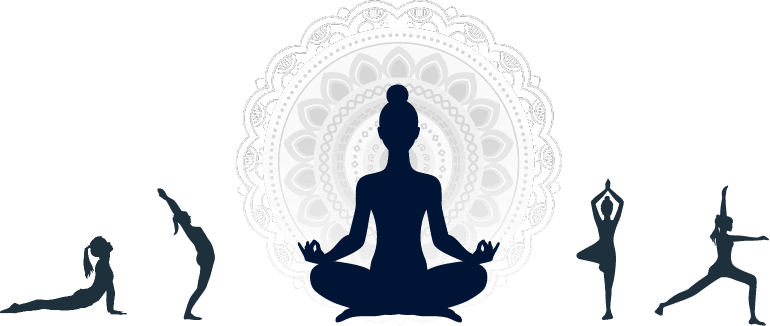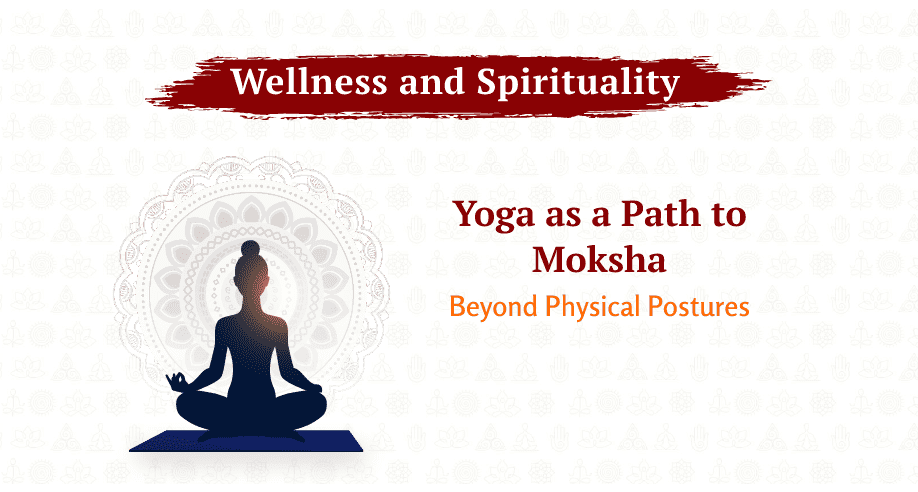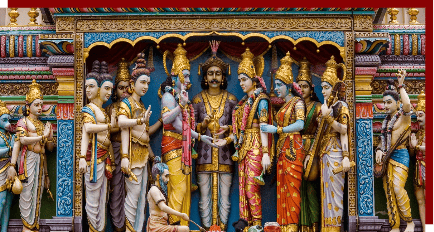Yoga as a Path to Moksha
Beyond Physical Postures
When we think of yoga, images of intricate asanas and physical postures often come to mind. However, yoga is more than a series of exercises—it is a profound spiritual discipline guiding practitioners toward moksha or liberation. Rooted in ancient Indian philosophy, yoga is a holistic path that unites the body, mind, and soul, leading to self-realization and freedom from the cycle of birth and death (samsara).
Understanding Moksha
In Indian philosophy, moksha represents the ultimate goal of human life. It is the liberation from the bondage of karma and the illusions of the material world (maya), allowing the soul (atman) to merge with the universal consciousness (Brahman). Moksha transcends physical existence, offering eternal peace, bliss, and freedom.
The Essence Of Yoga
Yoga is derived from the Sanskrit root “yuj,” meaning to unite. This union is not just of the body and mind but also of the individual self (jivatma) with the universal self (paramatma). While physical postures (asanas) are an integral part of yoga, they are merely one aspect of a broader spiritual practice.
The Four Paths Of Yoga Leading To Moksha
Yoga offers various paths to liberation, each catering to different temperaments and inclinations.

1. Bhakti Yoga (The Path Of Devotion)
Focuses on love and devotion toward the divine.
Practitioners surrender their egos and dedicate themselves to a higher power, finding freedom through unconditional love.
It emphasizes prayer, chanting, and rituals to develop a deep spiritual connection.
2. Karma Yoga (The Path Of Action)
Centres on selfless service and performing one’s duties without attachment to results.
By dedicating actions to the divine and avoiding selfish motives, practitioners transcend the bondage of karma.
3. Jnana Yoga (The Path of Knowledge)
It involves deep philosophical inquiry and self-reflection to discern the true nature of reality.
Through studying scriptures, meditating on the self, and gaining wisdom, one overcomes ignorance (avidya) and realizes unity with Brahman.
4. Raja Yoga (The Path of Meditation)
Known as the “royal path,” it emphasizes mental discipline and meditation to achieve self-mastery.
The eightfold path of Ashtanga Yoga, outlined by Patanjali, includes steps like ethical conduct (Yama), self-discipline (niyama), posture (asana), breath control (pranayama), and meditative absorption (samadhi), leading to liberation.
Beyond Physical Postures
While asanas improve physical health and flexibility, they are a preparatory step for more profound spiritual practices. They help calm the body and mind, creating the foundation for:
Pranayama
Breath control techniques that regulate life energy (prana).
Dhyana
Samadhi
Yoga as a way af life
Yoga is not confined to a mat or a session but a way of life. The principles of nonviolence (ahimsa), truthfulness (satya), and contentment (santosha) guide practitioners in their daily lives, aligning them with the path of liberation.

The Journey to Moksha
Yoga teaches that moksha is not a destination but a journey. It requires patience, dedication, and an unwavering commitment to self-improvement and spiritual growth. By integrating yoga practices into daily life, one gradually dissolves the ego, purifies the mind, and connects with the divine essence within.
Conclusion
Yoga is a profound spiritual path that goes far beyond physical fitness. It offers tools and techniques to navigate life’s challenges, transform the self, and achieve moksha. Whether through devotion, action, knowledge, or meditation, yoga provides a universal roadmap to liberation, inviting everyone, regardless of their background or beliefs, to experience the boundless joy of unity with the infinite.
Embrace yoga as a practice and a journey to freedom, peace, and eternal bliss.



